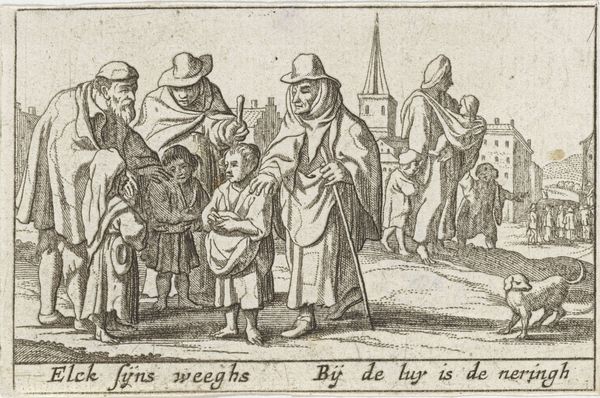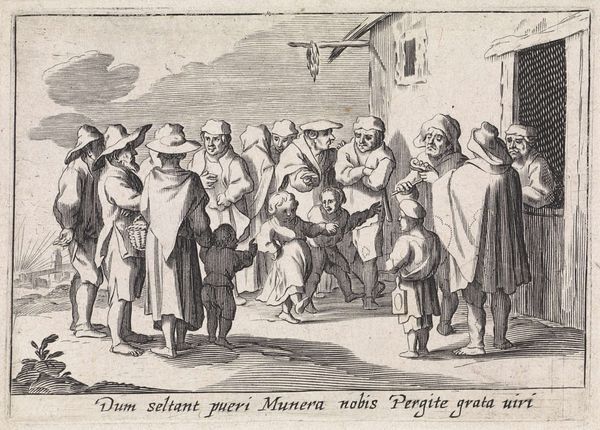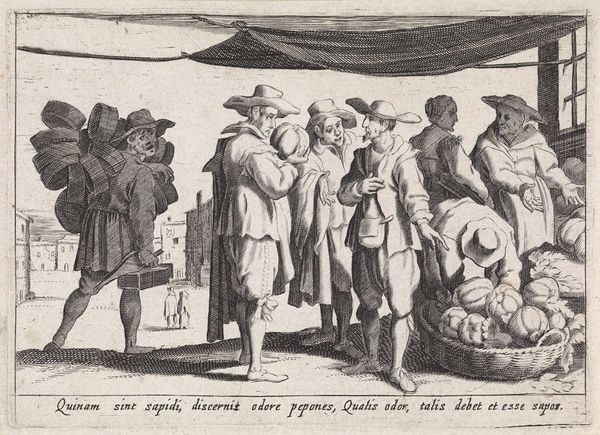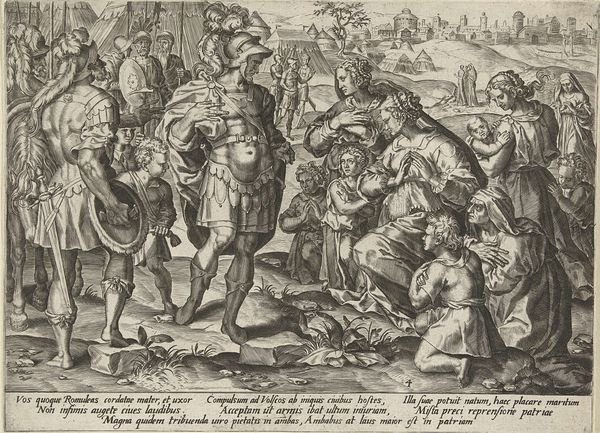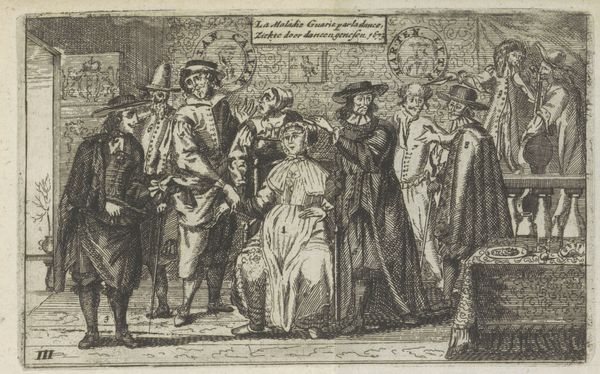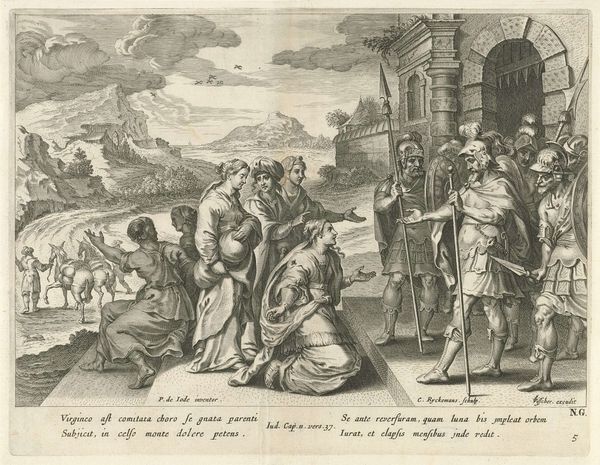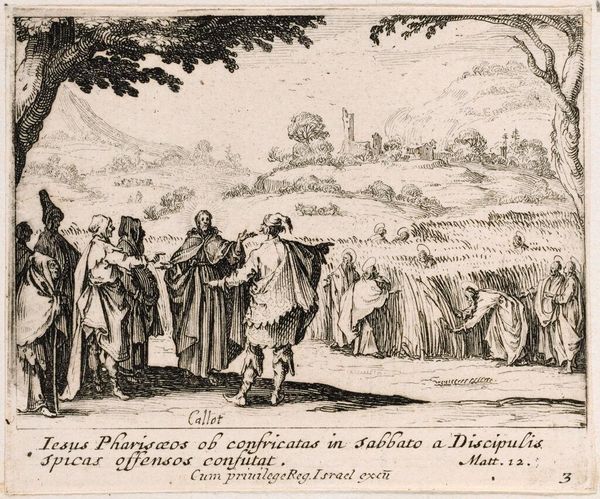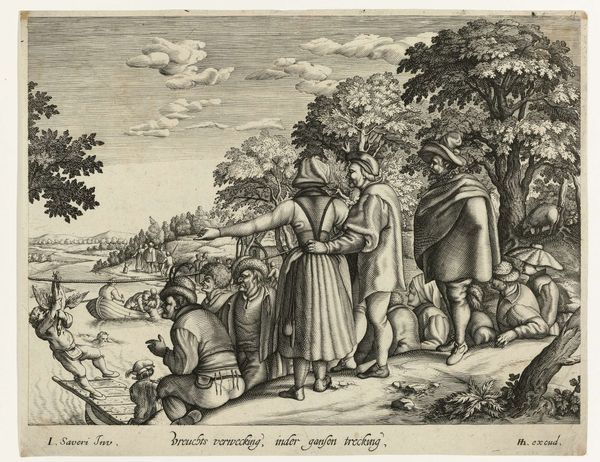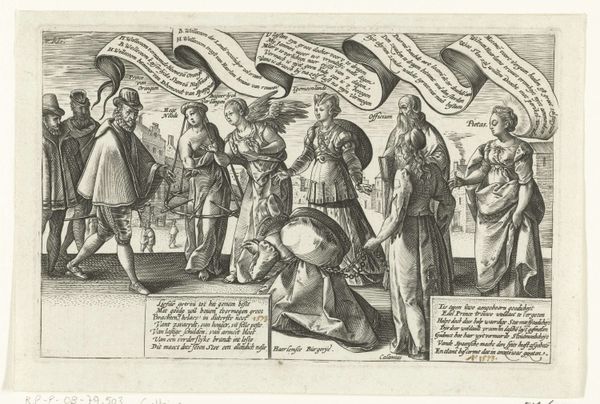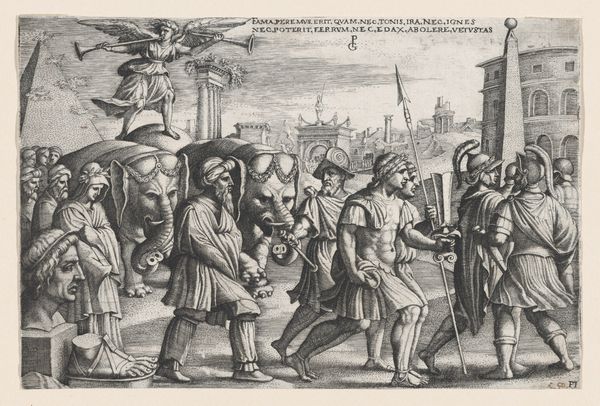
print, engraving
#
portrait
#
baroque
# print
#
figuration
#
line
#
genre-painting
#
history-painting
#
engraving
#
realism
Dimensions: height 82 mm, width 114 mm
Copyright: Rijks Museum: Open Domain
Curator: I am struck immediately by the intricate lines and the somber mood evoked by this engraving. Editor: Indeed. The work before us, entitled "Musicerende en zingende bedelaars," which translates to "Musician and Singing Beggars", was created around 1629 by an anonymous artist. It offers a detailed depiction of what seems to be a scene from daily life. Curator: It does present like a casual, almost journalistic slice of society. But I wonder, what visual or symbolic narratives lie within this staged encounter? What does this carefully orchestrated destitution signify, in cultural terms? Editor: From a formal perspective, the artist demonstrates considerable skill in organizing the composition. Look at how the figures are grouped, creating a rhythm and balance. The light and shadow—however subtly rendered in this line-based technique—guide the eye across the surface. Curator: The hats... a unifying motif, suggesting common social strata? Are these visual cues intentional? The boy, centered, seems to stand between those actively begging, and those with fuller garments. His future undecided. Editor: Semiotically, you could say the boy serves as the pivotal element, embodying transition between hope and poverty. The figures behind him seem less overtly distressed, yet still project a melancholic posture as part of this arrangement. Curator: Yes, but are we intended to interpret the clothing solely as indication of poverty? What could the arrangement suggest beyond a surface read? It’s possible these robes allude to shared histories, and the song they make a vehicle for its oral passing through time... Editor: Regardless, the visual language the anonymous artist uses here—line, texture, form—makes for a captivating look at what could well be simple observation or a subtle message encoded in images of daily life. Curator: Absolutely. A testament to the power of visual imagery to hold layers of history and cultural resonance. Editor: It's a perfect case for combining sharp observation with narrative, and a thoughtful example of its period style.
Comments
No comments
Be the first to comment and join the conversation on the ultimate creative platform.
